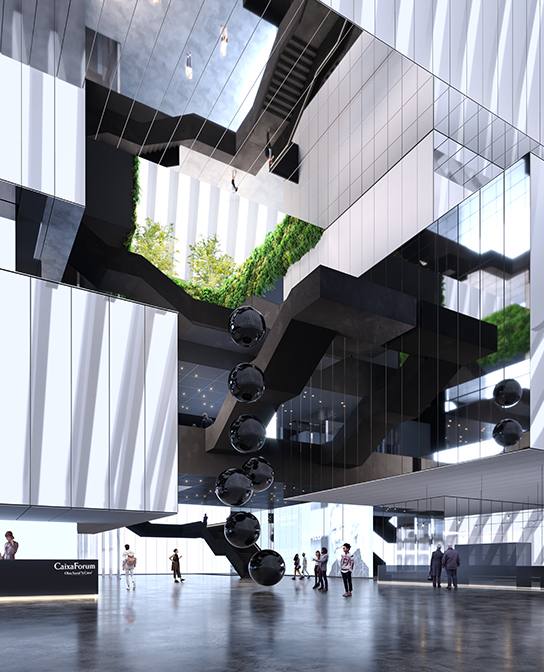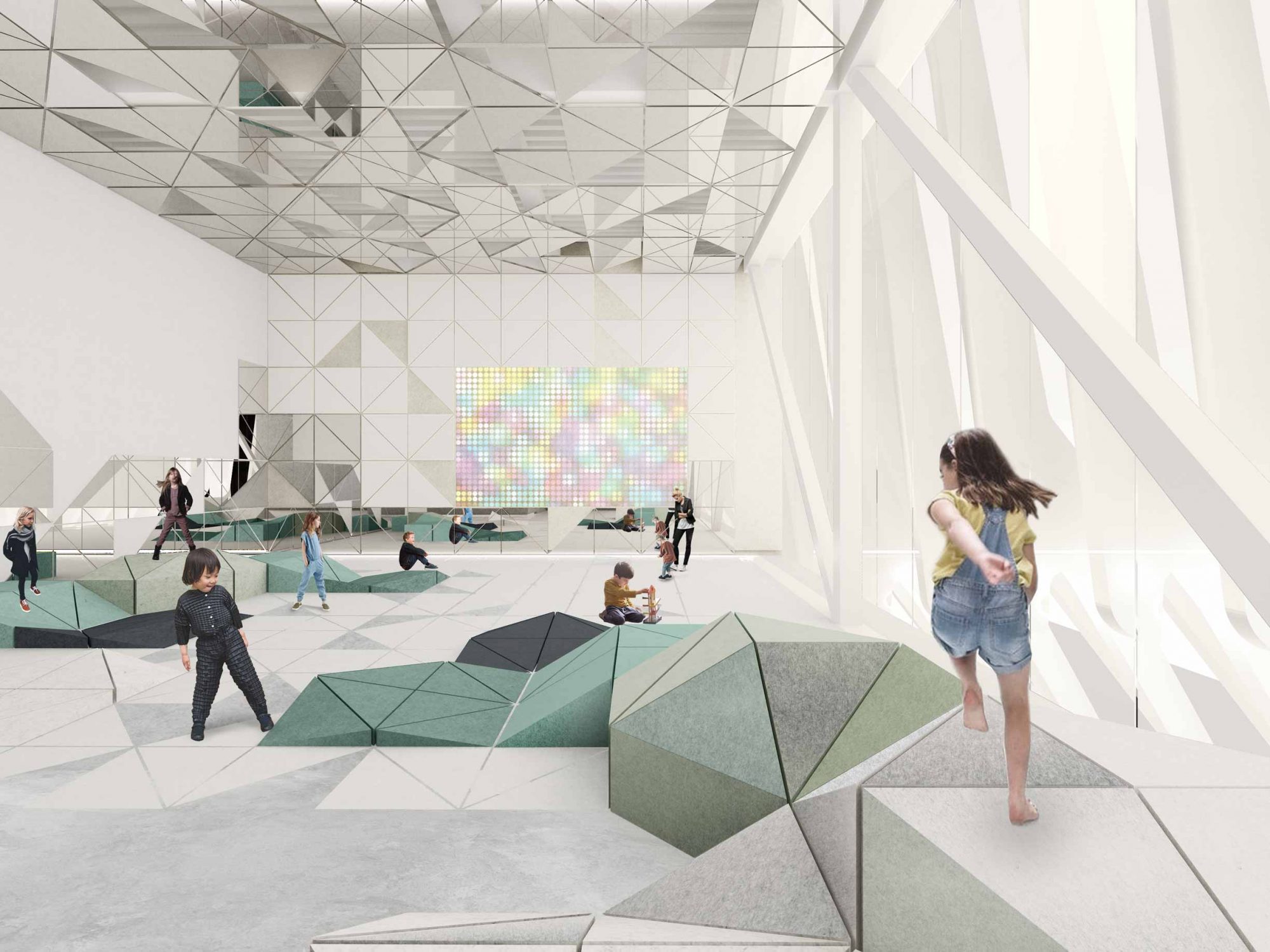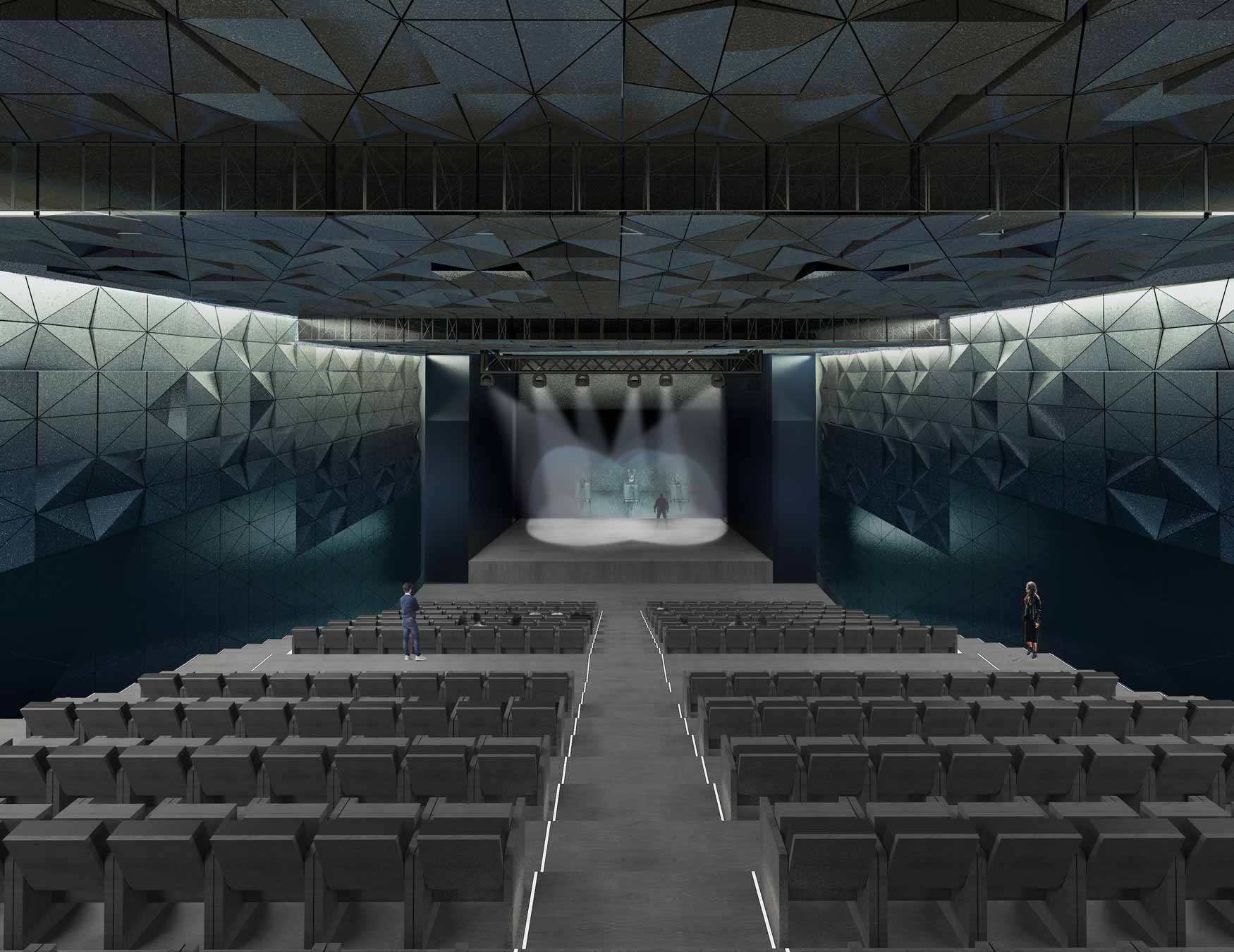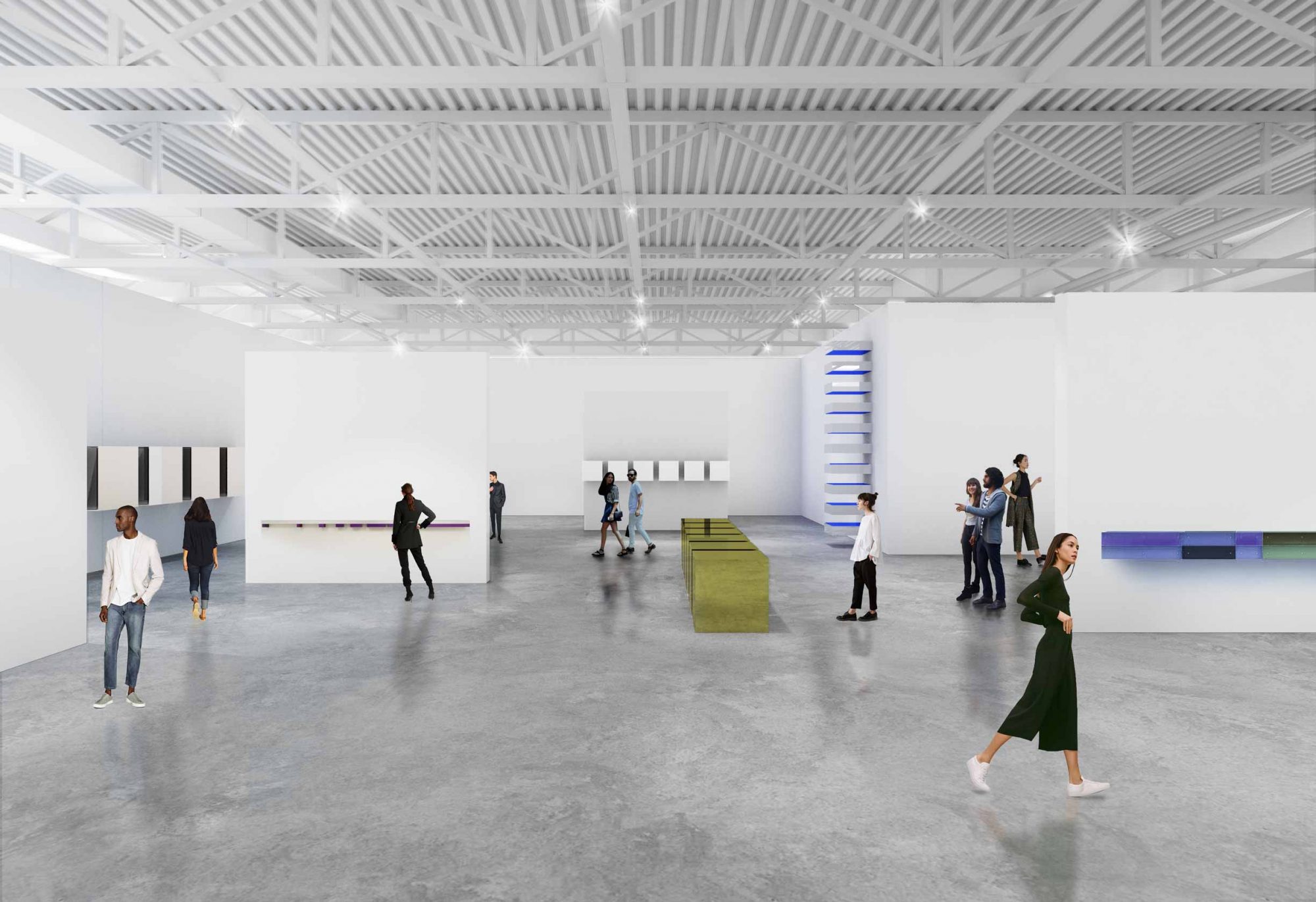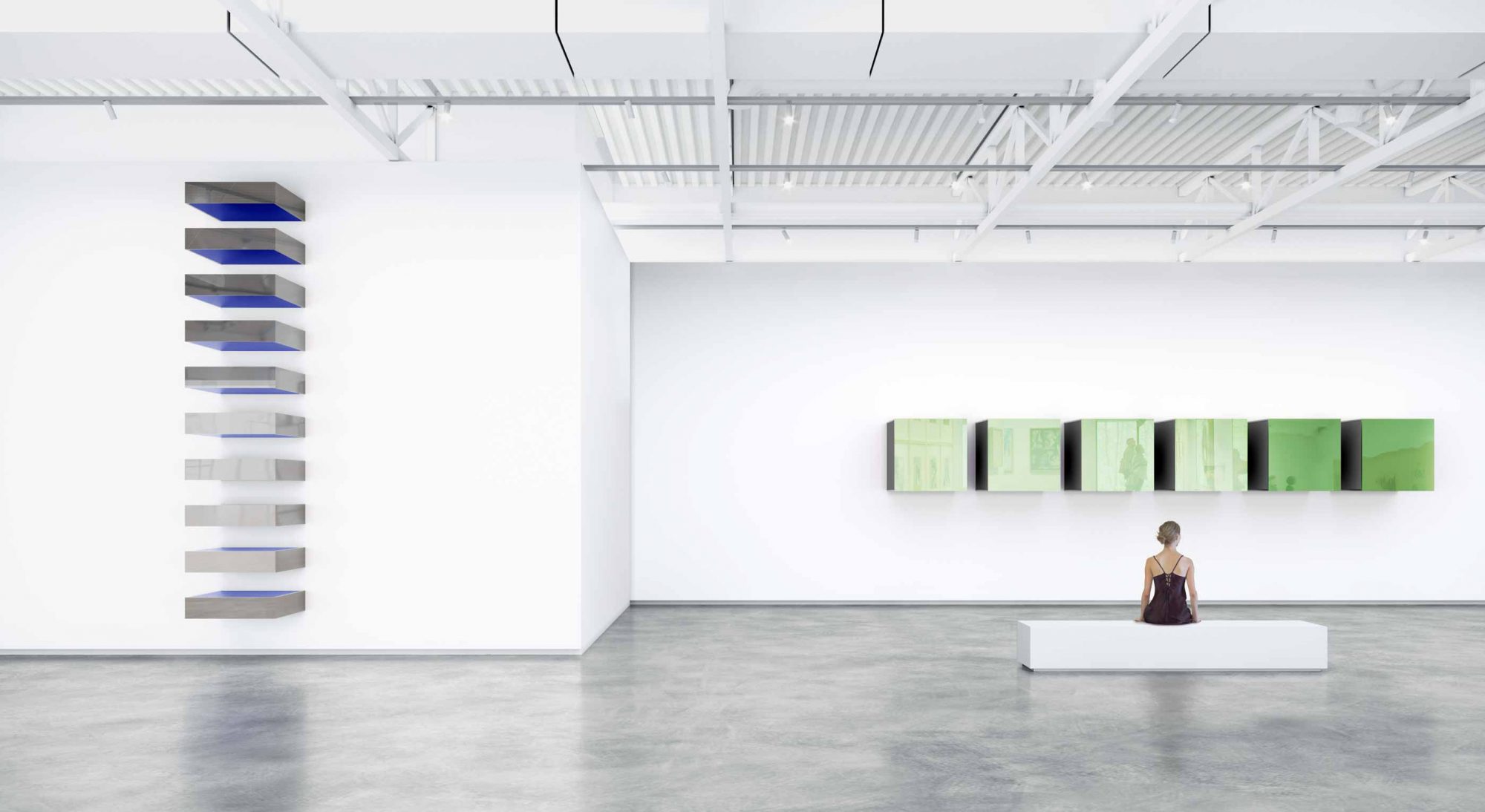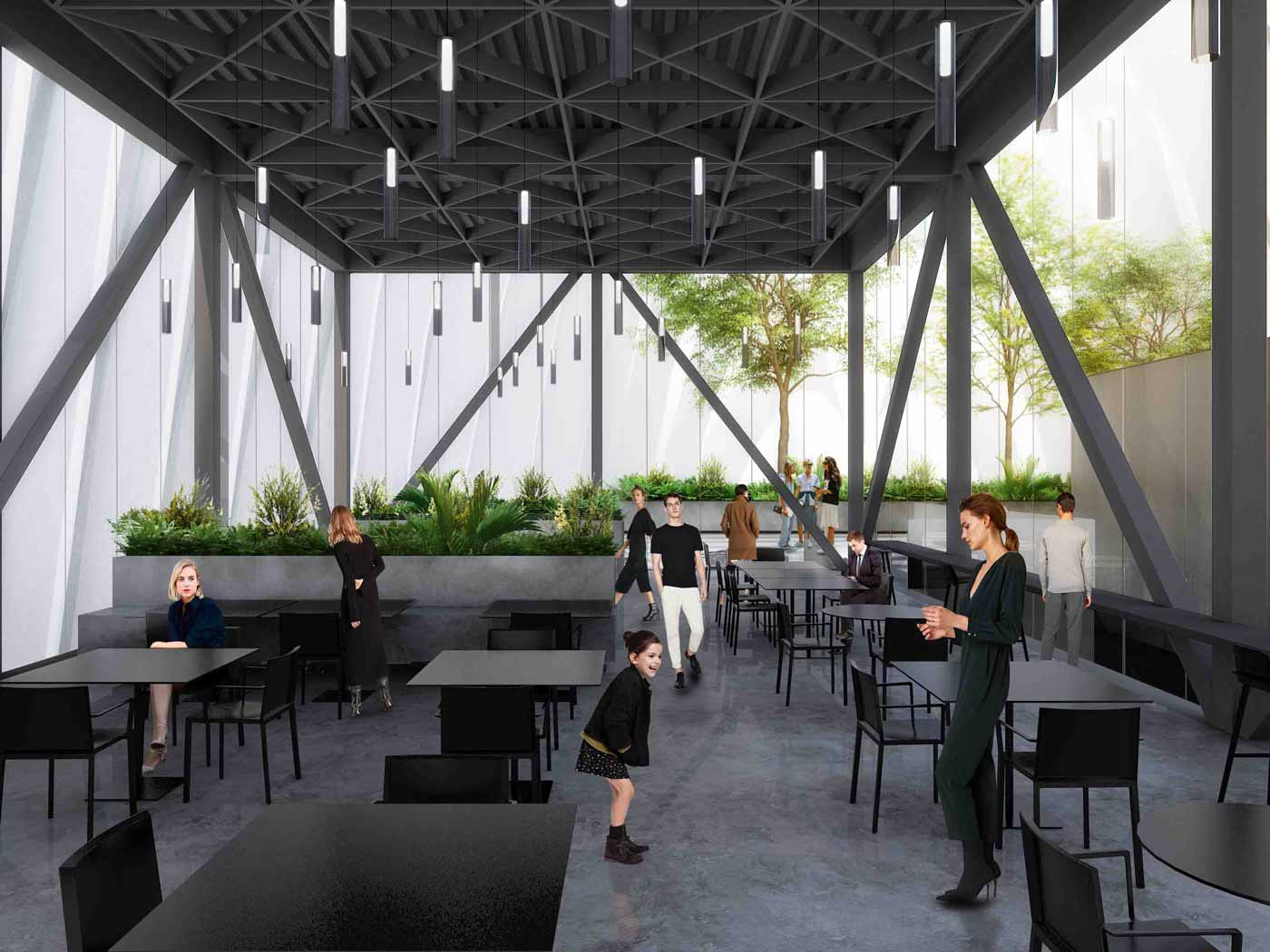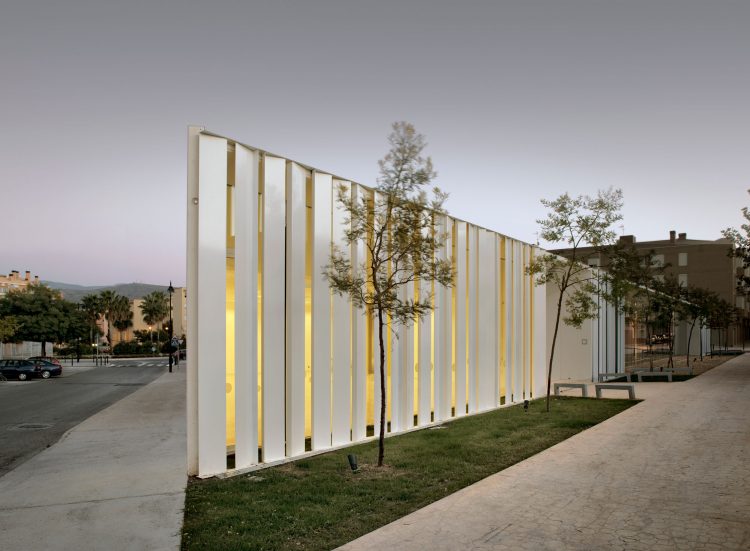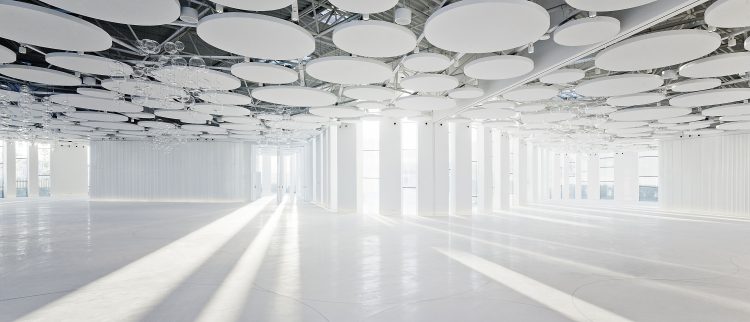Valencia 2017 6.510 m²
The proposal for the new Caixa Forum building in Valencia was inspired by the concept of a storyboard, which is a set of illustrations sequentially displayed with the aim of serving as a guide to understand a story.
The design was created as a sequence of scenes linked by a path, a ribbon that, like the Turia’s riverbed, connects artistic pictures and spaces of a different kind; a road that ends in a new museum centre to promote culture, arts and music inside the Agora.
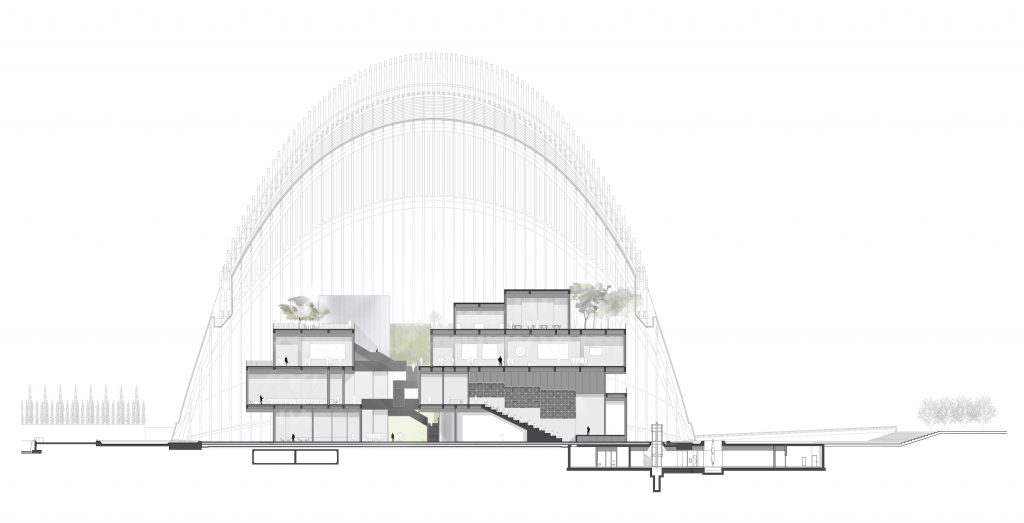
Caixa Forum was conceived as a sculpture that captures its immediate surroundings without competing. Then, as a reflecting mirror, it shows its materialisation to the visitor thus solving the integration into the Agora.
Pixels
The open central space is a large vertical axe of activity and energy that relates every storey and opens to the access hall. The centre’s core, the central atrium, connects the different activities within the programme. It is built as a pixelated tapestry where different finishes combine on its faces.
Its cubical geometry defines large vertical and horizontal surfaces that, when close to the roof, are used to host some vegetation. This way, we generate a vegetal landscape that works a garden inside the Turia riverbed garden.
One of the project’s singularities is the fact of rising a building inside another existing one, whose structure and architecture mustn’t be affected. Because of this, we chose a lightweight building system, easy to handle and assemble, that overlaps prismatic volumes.
Levels
The ground floor welcomes the visitors in the museum’s main hall and hosts the service and welcoming areas. The hall was conceived as a dynamic circulation and rest space, offering the first information contents by different media. The first floor hosts the Scenic Arts, thus supporting the areas through a central foyer that can host reception events.
The second floor hosts the exhibition areas, the main activity in the Caixa Forum. Its hall contains a vertical garden that looks like a hanging canvas. The path to the third floor ends into an opened terrace under the Agora’s dome. The interior garden presents one of the last main scenes of the storytelling, a unique ending for the museum centre.
The café-restaurant is invaded by the garden and the natural light that comes through the roof’s outlets. The private areas, located into the Creation and Coordination area, take advantage of this floor’s isolation and wideness.
Environmental quality and sustainability
The mirror’s reflecting quality takes the sunlight through the central atrium to the ground floor. A thorough constructive design and high-tech installations improve sustainability, energy efficiency and user’s comfort.
-
Architect
Ramón Esteve
-
Collaborating Architects
Anna Boscà
Javier Estevan
Francisco Palomo -
Technical Architect
Emilio Pérez
Carolina Tarazona -
Collaborators
Tudi Soriano
-
Structure Engineering
BIS Structures
-
Engineering
PGI Engineering
-
Lighting
Anoche Iluminación Arquitectónica
-
Landscaping
Gustavo Marina Paisajistas
-
Model
miniArquitectura

